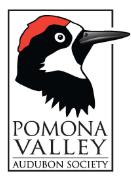
Some of our favorite local birding sites
Mt Baldy Scenic Lift Ride and hike to Thunder Mountain https://mtbaldyresort.com/scenic-lift/
Birding begins on the drive up while you gain altitude and start seeing montane species (Scrub Jays give way to Steller’s Jays) and continues in the parking lot as you get ready to board the Sugar Pine Chair Lift. The 20-minute ride takes you to the Top of the Notch Recreation Area at 7,800 ft. The hike east towards Thunder Mountain (9,414 ft.) is on wide dirt (fire) roads and has fabulous vistas both inland towards the desert and on a clear day, views of the ocean in the opposite direction. Expect all the usual high altitude bird species (Pygmy Nuthatch, Clark’s Nutcracker, Cassin’s Finch, White-headed Woodpecker and a nice selection of warblers) but one of the highlights for me is seeing Williamson’s Sapsuckers.
Guasti Regional Park https://parks.sbcounty.gov/park/cucamonga-guasti-regional-park/
My closest regional park does not have a huge selection of birds, but it is convenient, and I’ve never been disappointed. Nice for first time birders because they will not be overwhelmed with too many species to remember, there is a great blend of water birds, park birds and in the north east corner of the park in a small riparian area, a nice selection of scrub and chapparal birds.
Prado Regional Park https://parks.sbcounty.gov/park/prado-regional-park/
Rushing Clark’s and Western Grebes, breeding Vermillion Flycatchers, Bald Eagles, Osprey, Peregrine Falcons, White-tailed Kites and a good size population of endangered Least Bell’s Vireo’s makes Prado one of my favorite places to bird. With all the usual birds associated with lakes and parks, Prado also has a ‘wild side’. A large riparian area, and some grasslands at the south end of the park that are worth exploring. The long-tailed weasels are always fun to see as well.
Best Cemeteries
Cemetery birding, especially at locations that have both old and young trees are great places to bird. Here’s some favorites: Oakdale Mortuary and Memorial Park in Glendora is famous for Vermillion Flycatcher in the new area with baby trees ideal for perches and lots of grass. For big, old trees, Pomona Cemetery can’t be beat. Other favorites Oak Park in Claremont, and Bellevue in Ontario.
Chino Creek Wetlands and Education Park https://www.ieua.org/chino-creek-wetlands-educational-park/
The restored wetland and riparian habitats at Chino Creek support favorites like Yellow-breasted Chat, Least Bell’s Vireo, Green and Black-crowned Night Herons and a variety of warblers, especially Yellow Warblers. Natural mosquito control is enhanced by a trail of Tree-Swallow nest boxes and the chicks can be seen begging food at the entry hole during the breeding season. The facility is relatively small, 22 acres, and can be done alone or, if time allows, in combination with other gems in Chino like the Mill Creek Wetlands or Chino Hills State Park.
Brian Elliott, Conservation and Advocacy Chair
Barrett-Stoddard Truck Trail (SBE)
eBird Hotspot listing https://ebird.org/hotspot/L3174406
eBird bar chart https://ebird.org/barchart?r=L3174406&yr=all&m=
Chapparal, oak and pine forest, open hillsides
Year round with May and June best for singing birds
Walk road uphill reaching cabins and then continue past gate, reach Stoddard Saddle in 2.5 mi
Wrentit, Lazuli Bunting, Western Tanagers, Black-headed Grosbeaks, Black-chinned Sparrows on open slopes about 2 mi from parking
Getting there: Drive up Baldy Road to the signed Barrett-Stoddard Road, parking is to the right.
Angeles NF -Glendora Ridge Road mile 7.85
eBird Hotspot listing https://ebird.org/hotspot/L5680774?yr=all&m=&sortBy=spp
eBird bar chart https://ebird.org/barchart?r=L5680774&yr=all&m=
Chapparal, oak and pine
Best April-June, walk dirt road beyond yellow gate
Lazuli Bunting and Black-chinned Sparrow common in first mile of road
Getting there: Drive to Baldy Village and turn left onto Glendora Ridge Road, travel 7.85 mi and park along road or in nearby pull-outs
Sunset Peak Saddle
eBird Hotspot listing https://ebird.org/hotspot/L917353?yr=all&m=&rank=mrec
eBird bar chart https://ebird.org/barchart?r=L917353&yr=all&m=
Oak forest and chapparal
Best in spring Black-throated Gray Warbler, White-breasted Nuthatch, Mountain Chickadee, Mountain Quail, Oak Titmouse
Getting there: Drive to Baldy Village and turn left onto Glendora Ridge Road, Drive about 0.7 miles up the road to the saddle, park on the side of the road , do not park in large parking area (private property), walk up dirt road on south side of the road past locked gate
Scott Marnoy, Field Trips Chair
Thompson Creek Trail, Claremont [click here for a map]
An easy two mile paved trail on the border between residential neighborhoods and chaparral-covered hills of the Claremont Hills Wilderness Park. Acorn and Nuttall’s Woodpeckers, California Quail, Cooper’s Hawk, California Thrasher, California Scrub Jay, California Towhee, Spotted Towhee, Anna’s, Allen’s and Costa’s Hummingbirds and Northern Mockingbirds are among the year-round residents. White-crowned Sparrow, and Golden-crowned Sparrow are common, October to April. Bullock’s and Hooded Orioles are frequent in the spring and summer.
Bolsa Chica Ecological Reserve, Huntington Beach [click here for a map]
Nesting habitat for Ridgeway’s Rail. Brant, Pacific Loon, Horned Grebe winter. Belding’s Savannah Sparrow, Reddish Egret are seen all year. Elegant Terns, Royal Terns and Least Terns arrive late spring-early summer, Western Sandpiper, Least Sandpiper, Short-billed Dowitcher, Willet, Long-billed Curlew are fall through spring residents.


